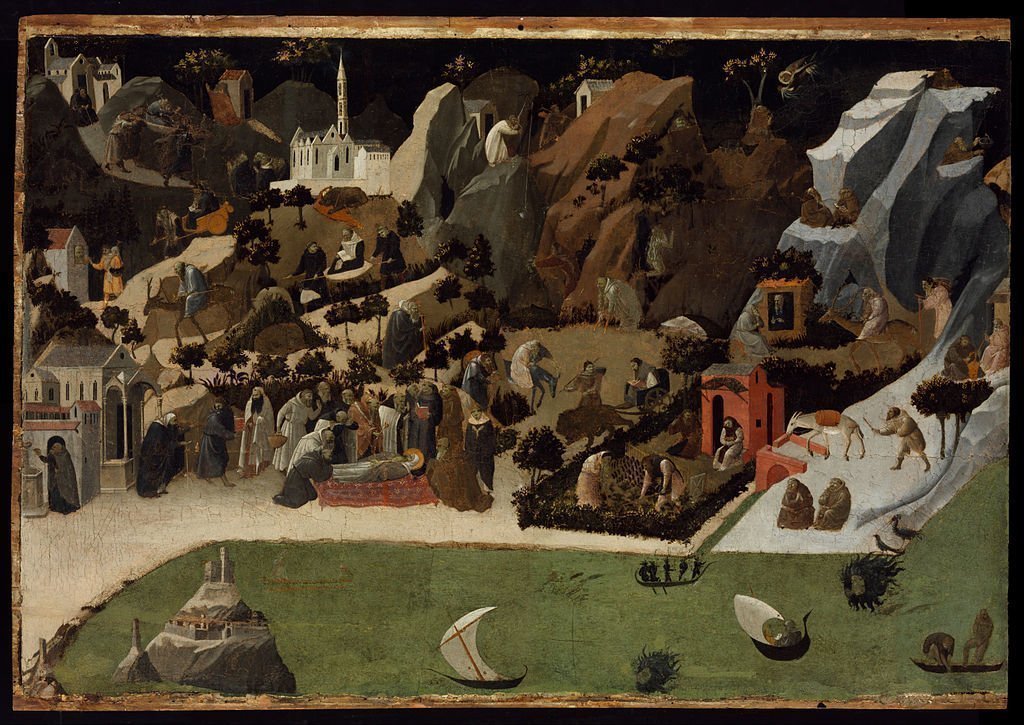Teaching the Great Books
-
Introduction
Teaching the Great Books: Course Introduction (Preview Content)4 Topics|1 Quiz -
LessonsLesson 1: What Should We Read? (Preview Content)4 Topics|1 Quiz
-
Lesson 2: How Should We Read the Classics?4 Topics|1 Quiz
-
Lesson 3: How to Do Deep Reading5 Topics|1 Quiz
-
Lesson 4: Ancient and Modern Modes of Interpretation4 Topics|1 Quiz
-
Lesson 5: How to Teach Great Books—Part I4 Topics|1 Quiz
-
Lesson 6: How to Teach Great Books—Part II5 Topics|1 Quiz
-
Lesson 7: Classroom Habits and Practices4 Topics|1 Quiz
-
Lesson 8: Who Do We Teach?4 Topics|1 Quiz
-
Lesson 9: Students Afflicted with Acedia or Ennui2 Topics|1 Quiz
-
Lesson 10: Helping Students Overcome Acedia or Ennui2 Topics|1 Quiz
-
Lesson 11: Who Is the Teacher?2 Topics|1 Quiz
-
Class ObservationsLesson 12.1: Observe 7th Grade Classroom (with pre-class interview)
-
Lesson 12.2: Observe 7th Grade Classroom (with class session)1 Topic
-
Lesson 13.1: Observe 10th Grade Classroom Day 1 (with pre-class interview)
-
Lesson 13.2: Observe 10th Grade Classroom Day 1 (with class session)
-
Lesson 13.3: Observe 10th Grade Classroom Day 1 (post-class interview)1 Topic
-
Lesson 14.1: Observe 10th Grade Classroom Day 2 (with pre-class interview)
-
Lesson 14.2: Observe 10th Grade Classroom Day 2 (with class session)
-
Lesson 14.3: Observe 10th Grade Classroom Day 2 (with post-class interview)1 Topic
-
Lesson 15.1: Observe 10th Grade Classroom Day 3 (with pre-class interview)
-
Lesson 15.2: Observe 10th Grade Classroom Day 3 (with class session)
-
Lesson 15.3: Observe 10th Grade Classroom Day 3 (with post-class interview)1 Topic
-
End of Course TestEnd of Course Test: Teaching the Great Books1 Quiz
Acedia

Acedia comes from a combination of the negative prefix a- and the Greek noun kēdos, meaning “care, concern, or grief.” (The Greek word akēdeia became acedia in Late Latin, and that spelling was retained in English.)
—Merriam-Webster Dictionary
What the desert fathers meant by acedia does imply a failure of effort, a failure linked to a lack of love—the Greek word they use (a-kedeia) literally means “lack of care.”
Acedia comes from a combination of the negative prefix a- and the Greek noun kēdos, meaning “care, concern, or grief.” (The Greek word akēdeia became acedia in Late Latin, and that spelling was retained in English.)
—Merriam-Webster Dictionary
What the desert fathers meant by acedia does imply a failure of effort, a failure linked to a lack of love—the Greek word they use (a-kedeia) literally means “lack of care.”

“Our struggle is what the Greeks called ἀκηδια [acedia], which we can refer to as a wearied or anxious heart. It is [akin] to sadness and is the peculiar lot of solitaries and a particularly dangerous and frequent foe of those dwelling in the desert.… Once [acedia] has seized possession of a wrecked mind it makes a person horrified at where he is, disgusted with his cell.… He groans quite frequently that spending such time [in his cell] is of no profit to him.…”



The sin which in English is commonly called Sloth, and in Latin, [acedia], is insidious, and assumes such Protean shapes that it is rather difficult to define. It is not merely idleness of mind and laziness of body: it is the whole poisoning of the will which, beginning with indifference and an attitude of “I couldn’t care less,” extends to deliberate refusal of joy culminates in morbid introspection and despair. One form of it which appeals very strongly to some modern minds is the acquiescence in evil and error which readily disguises itself as “Tolerance;” another is that refusal to be moved by the contemplation of the good and beautiful which is known as “Disillusionment,” and sometimes as “knowledge of the world;” yet another is that withdraw into an “ivory tower” of Isolation which is the peculiar temptation of the artist and the contemplative, and is popularly called “Escapism.” The penance assigned to it takes the form of the practice of the opposite virtue: an active Zeal.
—Dorothy Sayers’s commentary on (her translation of) Dante’s Purgatorio, canto XVIII


